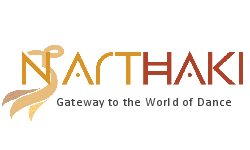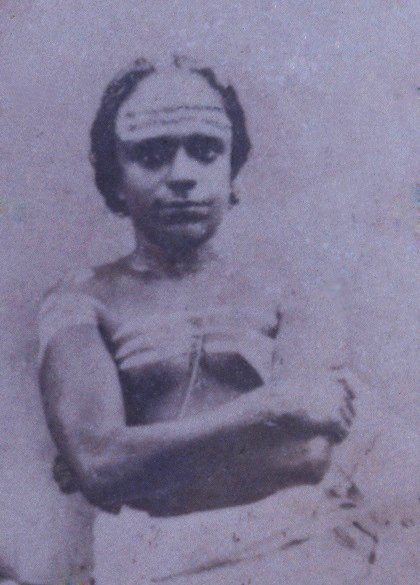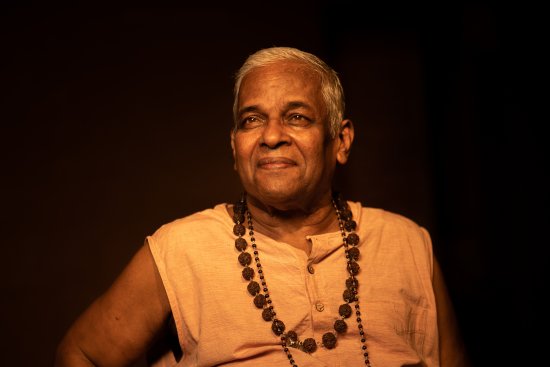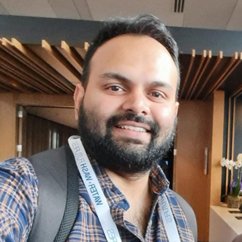
|   |

|   |
Venu G's Navarasa Sadhana workshop celebrates Natyashastra's inclusion in UNESCO's Memory of the World Register - Sreekanth Kartha e-mail: kartha.sree@gmail.com May 13, 2025 The 124th Navarasa Sadhana workshop held at Natanakairali, Irinjalakuda, coincided with a momentous occasion in the world of Indian performing arts; the inclusion of the Natyashastra manuscript, the ancient Sanskrit treatise attributed to Bharata Muni, into UNESCO's Memory of the World Register. Joining the ranks of foundational texts such as the Bhagavad Gita, this recognition affirms the global relevance of India's intangible heritage in the field of theatre and acting. Guru Venu G opened the session with heartfelt reflections on the announcement, which he first received from Dr. Sandhya Purecha, Chairperson of the Sangeet Natak Akademi and a prominent scholar of the Natyashastra. He recalled the deep joy and emotion he felt as a practitioner of the tradition. For Venu G, this international recognition for the treatise was not merely symbolic. It was a call to re-engage with Natyashastra meaningfully, as a living manual of actor training, aesthetics, and performance philosophy.  Venu G with Narayana Pisharody and Ammannur Madhava Chakyar The Natyashastra, composed over two millennia ago, is widely regarded as one of the most comprehensive treatises on drama, dance, and music in the Indian subcontinent. In his presentation, Venu G was keen to highlight the remarkable efforts of scholars who contributed to the survival and revitalisation of Natyashastra knowledge in modern India. In the context of Bharatanatyam, he acknowledged the monumental research and practical application work of Dr. Padma Subrahmanyam, whose pioneering analysis of karanas helped re-establish a connection between the textual tradition and dance. In Kerala, he paid tribute to K. P. Narayana Pisharody, who translated the Natyashastra into Malayalam and became a guiding voice on the treatise in the 20th century. Venu G noted that Pisharody's scholarship had a direct impact on the practice of Koodiyattam, enabling deeper textual engagement and interpretation. He also mentioned Prof. K. G. Paulose's Natanakusham and Dr. V. S. Sharma's translation of Balaramabharatam as other major contributions that deserve wider recognition. A pivotal moment in Guru Venu's personal journey came through his collaboration with scholar Kapila Vatsyayan, on a Natyashastra based theatre adaptation of Abhijnana Shakuntalam. This experience deepened his conviction in the relevance and potential of classical Indian aesthetics in modern theatre. It also catalysed his pursuit of training in Koodiyattam, the only surviving Sanskrit theatre tradition, which provided him with a living laboratory to understand and test the principles of the Natyashastra in performance. Despite its vast scope and intricate analysis of rasa, bhava, abhinaya, stagecraft, music, and more, it has remained underexplored in the context of modern institutional training in India. Guru Venu G addressed this concern poignantly during the workshop. He expressed sadness that when national drama schools and performing arts institutions were established in independent India, the curriculum largely ignored Indian classical treatises like the Natyashastra and adopted Western acting methodologies such as Stanislavski's system as the dominant pedagogical model.  Kodungallur Bhagavathar Kunjunni Thampuran (1908) This exclusion, while disappointing, became a turning point in Venu G's life. He saw it as a compelling reason to develop an alternative, Indian actor-training methodology that was both deeply rooted in indigenous performance theory and practically viable for contemporary performers. Thus, was born Navarasa Sadhana—a rigorous, psychophysical training process that brings to life the nine rasas described in the Natyashastra, integrated with the Swaravayu technique devised by Kunjunni Thampuran of the Kodungallur royal family. This training system is not just theoretical; it is designed to activate emotional memory, breath, movement, and awareness, making it both experiential and transformative. During the session, Guru Venu offered rare insights into the historical roots of Swaravayu, which flourished in the acting laboratory of Kodungallur for over two centuries. It was here that legendary actors such as Ammannur Madhava Chakyar and Pattikkamthodi Ravunni Menon received advanced training in acting. These masters, renowned for their depth in Koodiyattam and Kathakali, carried within them an acting lineage that was highly nuanced, structured, and spiritually charged. Guru Venu also spoke of his own moment of revelation when, while learning under Guru Ammannur, he came to know that even this great master had been exposed to the Swaravayu method, a powerful connection that validated the importance of the tradition he was seeking to revive.  Venu G What distinguishes Navarasa Sadhana, as the seminar emphasized, is not just its fidelity to Natyashastra theory but its ability to integrate and activate that theory in performance. The method systematically works with the Vibhava - Anubhava - Vyabhichari bhava triad, as outlined in the treatise, to generate authentic rasa experience in both actor and viewer. Guru Venu elaborated on the 33 Vyabhichari bhavas (transitory emotions) detailed in the Natyashastra, and how a performer equipped with these subtle emotional keys can portray virtually the entire range of human experience. This, he noted, is the true magic of classical Indian acting that enables transcendental recreation of lived emotions. Importantly, Guru Venu emphasized that the recent UNESCO recognition is not just a matter of pride but an opportunity: an invitation to rethink and reclaim indigenous frameworks in arts education. He expressed hope that drama schools and university programs in India would now more openly consider incorporating Natyashastra based approaches into their curricula. Rather than sidelining traditional systems in favour of Western models, he called for plurality, dialogue, and deeper appreciation of our own roots. "Let this be a turning point," he said, "for India to recognise what the world has now acknowledged that the Natyashastra is not a relic of the past but a guiding light for the future of performance."  Sreekanth Kartha holds a deep appreciation for Indian classical music, dance, and theatre. He finds joy in spending time with his family and engaging in artistic pursuits whenever possible. He also serves as a Principal Scientist at CSIRO, Australia's national science agency at other times. |